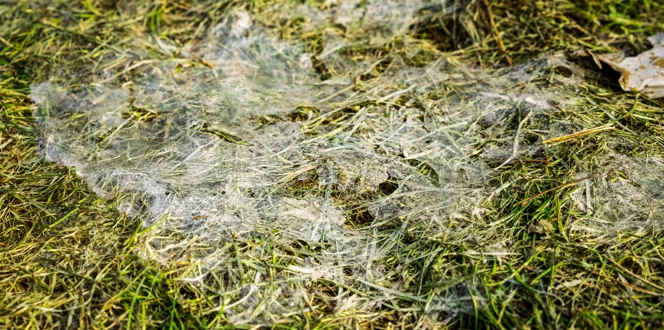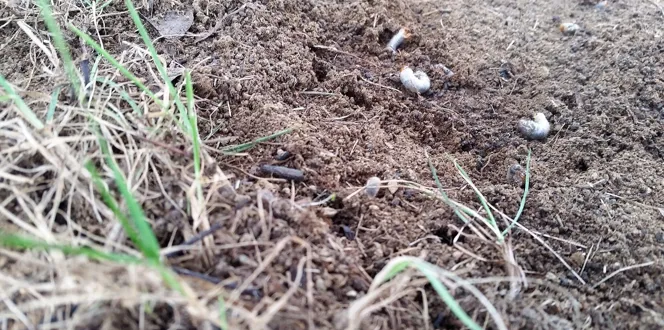Shades of brown are a common sight in the fall season, from the fallen leaves that crunch under our feet to the bare tree branches that hang above our heads.
But brown spots in the grass during fall? They sure do stick out like a sore thumb! Plus, they can cause concern about the health of your lawn.
If you’re wondering what the deal is with the brown patches on your lawn, read on for a potential explanation.
Why Does Grass Turn Brown In Fall?
The short answer is lawns are either turning brown because winter is on its way, or there’s a different issue like a disease or poor maintenance.
Let’s get into more detail to figure out what’s going on with your lawn.
I have brown spots in my grass shaped like circles
Chances are, that’s brown patch disease. Brown patch can appear in lawns in early fall if it’s humid and temperatures are about 70 degrees and up.
Your lawn likely has brown patch if:
- There are brown patches roughly shaped like circles that are up to several feet wide
- In the center of the patch, the grass is green, creating a doughnut-like look
There are a few things you can do to relieve your grass of brown patch disease:
- Only water your lawn if it’s dry. When you do water, plan to do it in the morning
- Mow your lawn at the proper height (the sweet spot is 2-4 inches) and aerate your lawn if it has lots of thatch—a layer of dead grass that builds up between the soil and live grass
- Talk to your local arborist about a fungicide to treat brown patch
My entire lawn turned brown in fall
If you live in a warm climate, there’s likely no need to worry. Warm-season grasses like zoysiagrass or bermudagrass turn brown in fall season to prep for winter. As temperatures cool down, warm-season grasses go dormant to protect themselves from winter elements, and then they’re back in action come springtime.
As long as your lawn is pretty evenly brown, and not covered in blotchy brown patches, you don’t need to be concerned.
I have bare brown patches of grass
That could happen for a number of reasons, like low mowing, heavy foot traffic or sunburned spots that are still lingering after summer. Overseeding helps restore lawns with problem areas. Depending on where you live, it might be best to overseed in fall right when you spot an issue. But first, check here to find out the best time to overseed the lawn in your region.
How To Proactively Prevent Brown Patches On Lawns
Staying on top of proper lawn care can really make a difference in the look and health of your lawn. If you want to get ahead of the game and stop brown spots before they start, look to these lawn care essentials:
- Water a few times a week for a total of one inch of water per week. Always try to avoid over-watering your grass so you don’t create a moist, fungus-friendly environment. A good rule of thumb is to water in the morning so the grass blades can take the day to dry off
- Mow to keep your lawn at a height of 2-to-4 inches. The best mowing height depends on the season
- Fertilize the grass to keep it green and in good health. But, be careful not to cause fertilizer burn
The Best Time to Apply Lawn Treatments
The 2-to-3 weeks before winter elements kick in is the best time to treat your lawn with fertilizer. Read all about the benefits of fertilizing your lawn in fall here.





